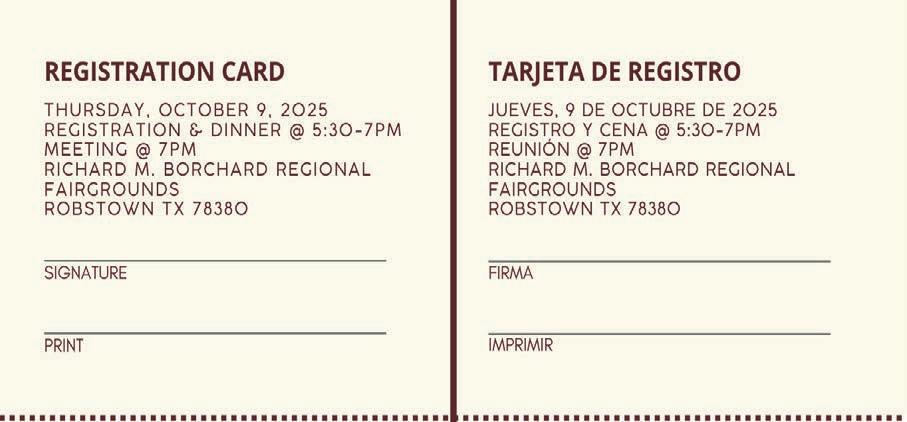

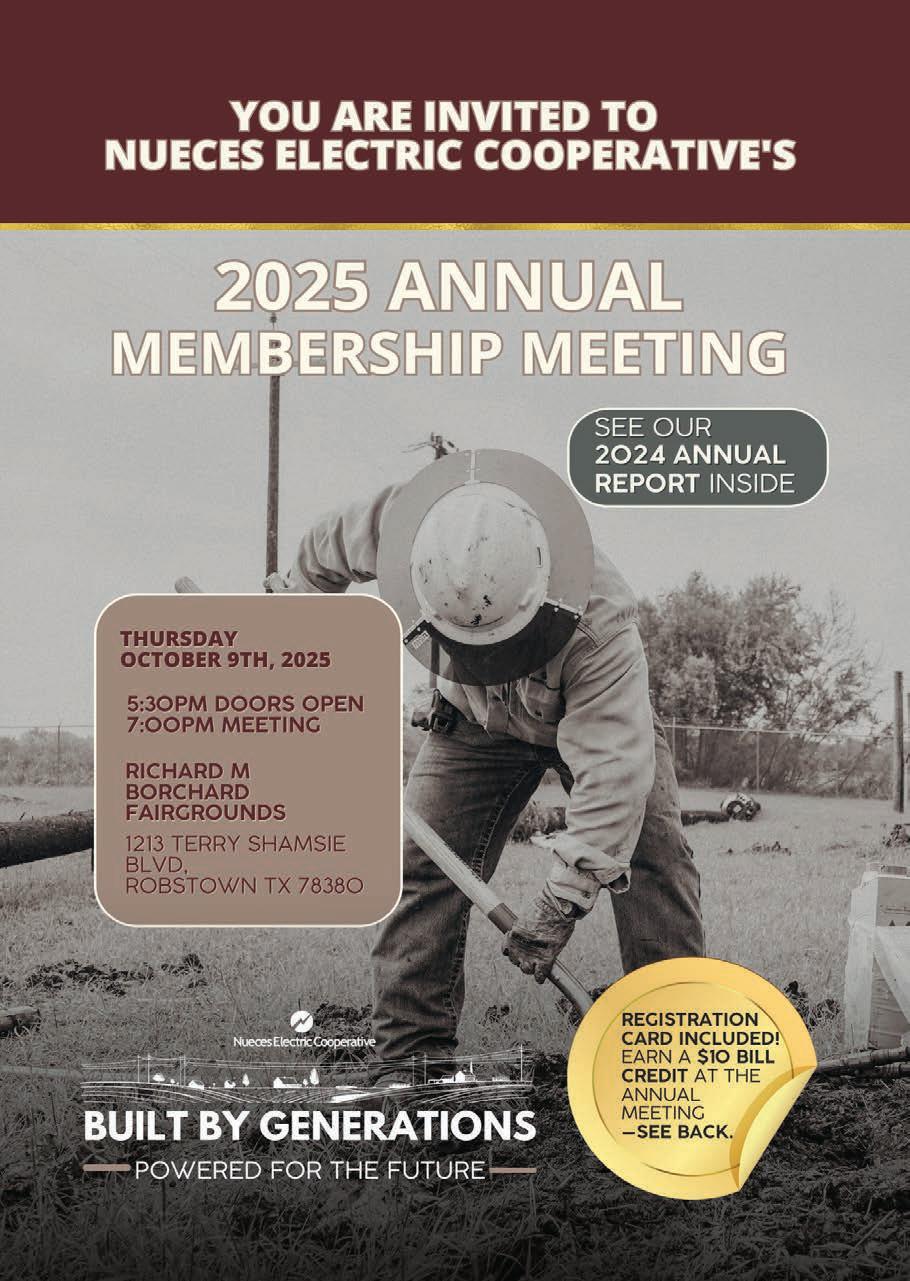

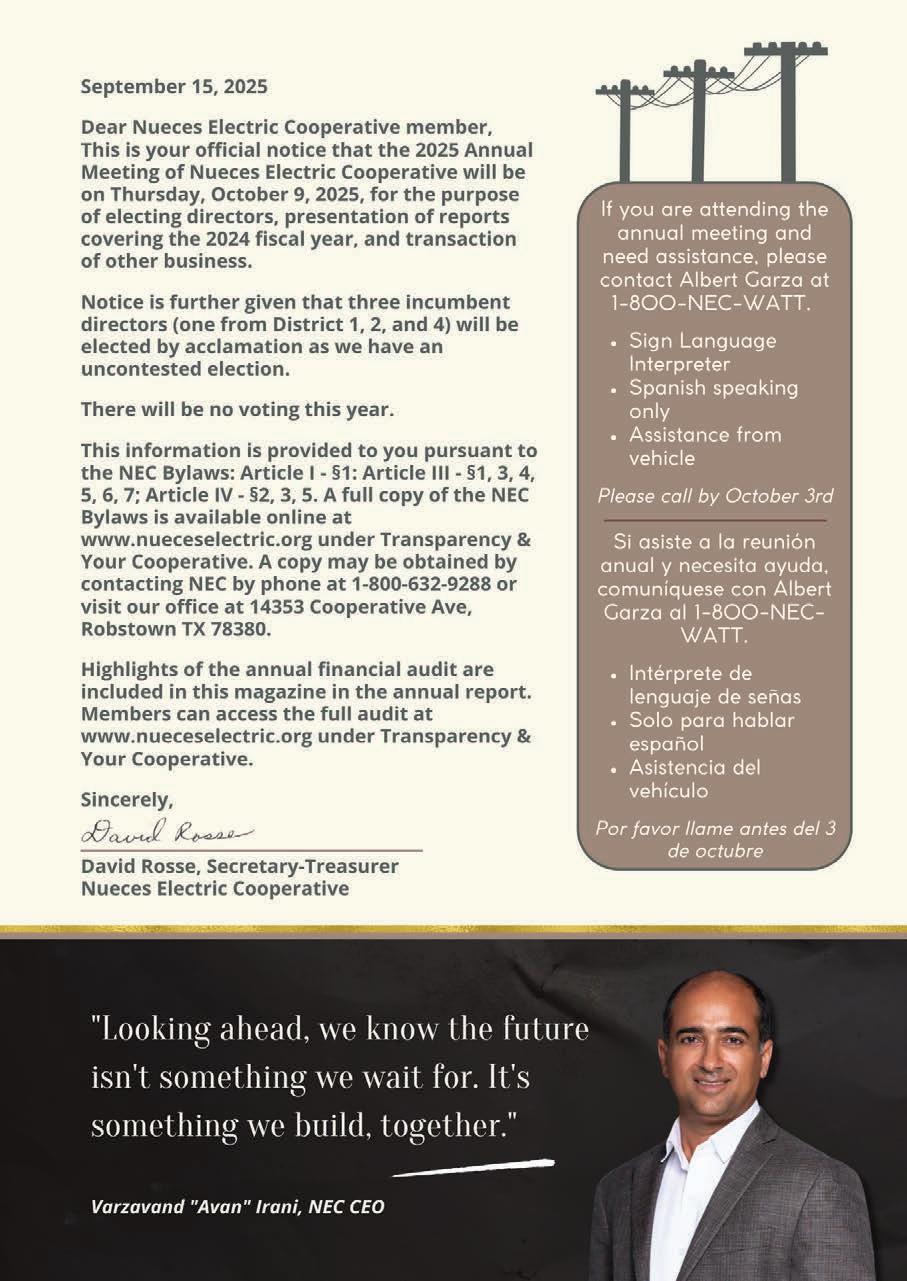
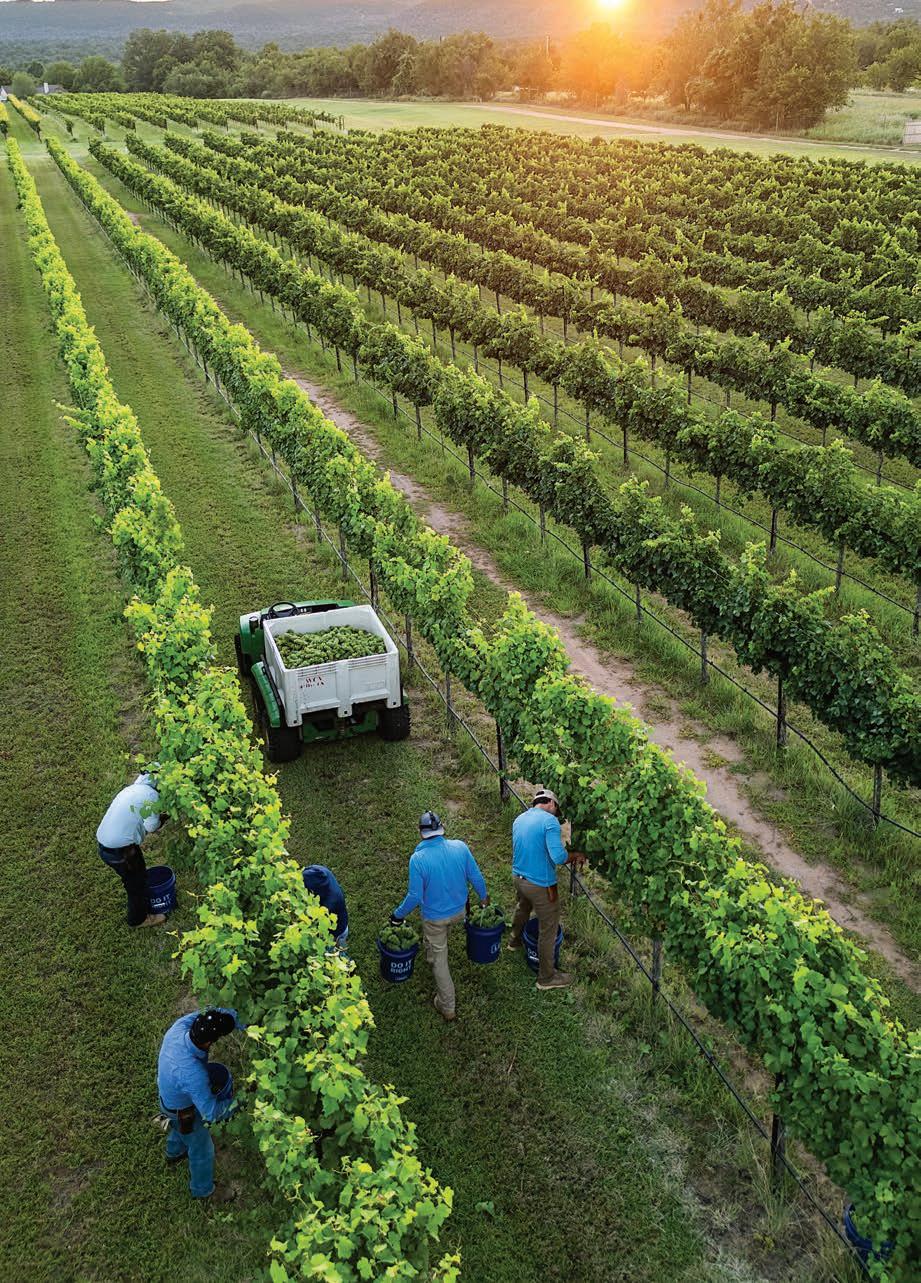







New American Viticultural Areas would help define Texas wines






































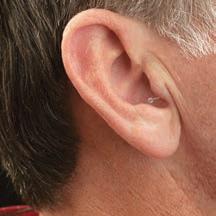
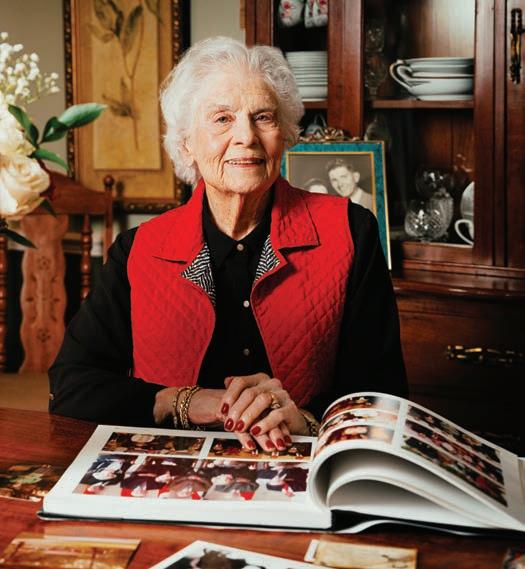
By D’Ann Nichols Drennan
By Amanda Ogle
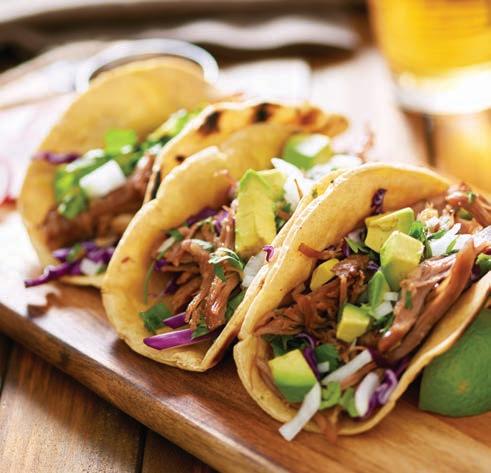
NATIONAL TACO DAY moved to the first Tuesday in October in 2024. Marketers liked the idea of Taco Tuesday.
Of course, in Texas, every day is taco day. Still, mark your 2025 calendars for October 7. And remember that we had the best reader recipes for tacos in March 2021—available online any day of the week.

Sugar Land wants to rise above all the snarling traffic around Houston.
The southwest suburb is looking at two solutions that could have commuters whizzing around overhead. Electric, self-flying taxis using vertical takeoff and landing is one possibility. Another is a system of on-demand, electric gondolas, left, that would glide on cables above city streets.
“We’re told to be trailblazers and not be afraid to take risks,” says Melanie Beaman, the city’s transportation and mobility manager.
The best food I’ve ever had at a fair is ...
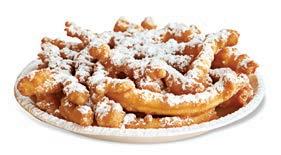
Tell us how you would finish that sentence. Email your short responses to letters@TexasCoopPower.com or comment on our Facebook post. Include your co-op and town.
Here are some of the responses to our August prompt: Another day, another ... Texas scorcher.
BENNY CALVIT
BOWIE-CASS EC DE KALB
Book read.
EMMA MACHALICA, AGE 12 UNITED COOPERATIVE SERVICES GRANDVIEW
Day to say I love you.
ROBERTA SHOWERMAN VIA FACEBOOK
Gray hair!
CAROL MERCER GRAYSON-COLLIN EC FAIRVIEW
Chance to make a difference.
LISA LEOPOLD BRYAN TEXAS UTILITIES BRYAN
Whataburger.
JAN PENTER CANAMORE NUECES EC BISHOP
Visit
ENTER CONTESTS AT TEXASCOOPPOWER.COM
$500 RECIPE CONTEST Barbecue Sides
FOCUS ON TEXAS PHOTOS
From the Oil Fields
RECOMMENDED READING
October is National Co-op Month. In October 2015 we looked at some of the terrific work co-ops do—in Texas and worldwide. Read the story at TexasCoopPower.com.

My husband’s family is proud of the fact that his uncle, Fred Morrison, invented the Frisbee, first called the Pluto Platter [Disc Jockeys, August 2025]. Several family members, including my then-teenage future husband, demonstrated the invention at state fairs before it was finally bought by Wham-O.
Kathleen Warr
San Bernard EC Hockley
Fire Prevention
I could add another tip: During holidays that normally have fireworks involved or during an extended dry spell, at each outdoor faucet I will stage a water hose with an attached nozzle [‘Every Part of Texas Is at Risk,’ August 2025]. If a fire starts that could affect our house, I can fight it till the fire department arrives.
Ted Pasche CoServ Argyle
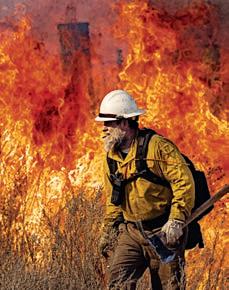
AUGUST
2025 Disc Jockeys
“Some think it’s just for college kids, slackers and stoners when, in fact, it’s a great sport for people of all ages (I’m 68).”
GREG MCCARTY PEDERNALES EC BUDA
The quote from “Anonymous” was an insult to every educator in this state [Currents, August 2025].
The quote means, “After you’ve forgotten how to read, forgotten mathematics, forgotten EVERYTHING that you learned in school … then you’re truly educated.”
Preposterous! As a retired educator, I can assure you that dedicated educators are teaching Texas students what they need to continue in life—in college, onthe-job training or life experiences— which they wouldn’t even be able to comprehend without those “useless things” they learned in school.
Susie McCalla
Central Texas EC Kerrville
A little over 40 years ago, I lived in northeast Arkansas for a while, and I kept a tiny carved agate armadillo on my desk [Dillo Dirt, July 2025]. One day a woman in the office finally picked it up and said, “What is this?”
She had never seen one.
Mona Tucker Rusk County EC Carthage
Editor, Texas Co-op Power 1122 Colorado St., 24th Floor Austin, TX 78701
Please include your electric co-op and town. Letters
TEXAS ELECTRIC COOPERATIVES
BOARD OF DIRECTORS
Chair Bryan Wood, San Augustine
Vice Chair Cameron Smallwood, Burleson
Secretary-Treasurer Jim Coleman, Edna
Board Members Matt Bentke, Bastrop Kerry Kelton, Navasota • Mark McClain, Roby • Zac Perkins, Hooker, Oklahoma
PRESIDENT/CEO Mike Williams, Austin
COMMUNICATIONS & MEMBER
SERVICES COMMITTEE
Mike Ables, Bellville • Kathi Calvert, Crockett
Tachi Hinojosa, Fredericksburg
Gary Miller, Bryan • Bryan Story, Blossom Grace Subealdea, Dalhart
Buff Whitten, Eldorado
MAGAZINE STAFF
Vice President, Communications & Member Services Martin Bevins
Editor Chris Burrows
Associate Editor Tom Widlowski
Production Manager Karen Nejtek
Creative Manager Andy Doughty
Advertising Manager Elaine Sproull
Communications Specialist Samantha Bryant
Digital Media Specialist Caytlyn Calhoun
Senior Designer Stacy Coale
Assistant Production Manager Alex Dal Santo
Print Production Specialist Grace Fultz
Food Editor Vianney Rodriguez
Communications Specialist Erin Sinclair
Communications Specialist Claire Stevens
Communications Specialist Kelly Tran
Proofreader Louie Bond
TEXAS CO-OP POWER Volume 82, Number 4 (USPS 540-560). Texas Co-op Power is published monthly by Texas Electric Cooperatives. Periodical postage paid at Austin, TX, and at additional offices. TEC is the statewide association representing 76 electric cooperatives. Texas Co-op Power’s website is TexasCoopPower.com. Call (512) 4540311 or email editor@TexasCoopPower.com.
SUBSCRIPTIONS Subscription price is $5.11 per year for individual members of subscribing cooperatives and is paid from equity accruing to the member. If you are not a member of a subscribing cooperative, you can purchase an annual subscription at the nonmember rate of $7.50. Co-op members: Please notify your co-op of address changes or other subscription requests.
POSTMASTER Send address changes to Texas Co-op Power (USPS 540-560), 1122 Colorado St., 24th Floor, Austin, TX 78701. Please enclose label from this copy of Texas Co-op Power showing old address and key numbers.
ADVERTISING Contact Elaine Sproull at (512) 486-6251 or esproull@texas-ec.org for information about purchasing display ad space in Texas Co-op Power and/or in our 26 sister publications in other states. Advertisements in Texas Co-op Power are paid solicitations. The publisher neither endorses nor guarantees in any manner any product or company included in this publication.
COPYRIGHT All content © 2025 Texas Electric Cooperatives Inc. All rights reserved. Reproduction of this issue or any portion of it is expressly prohibited without written permission. Willie Wiredhand © 2025 National Rural Electric Cooperative Association.
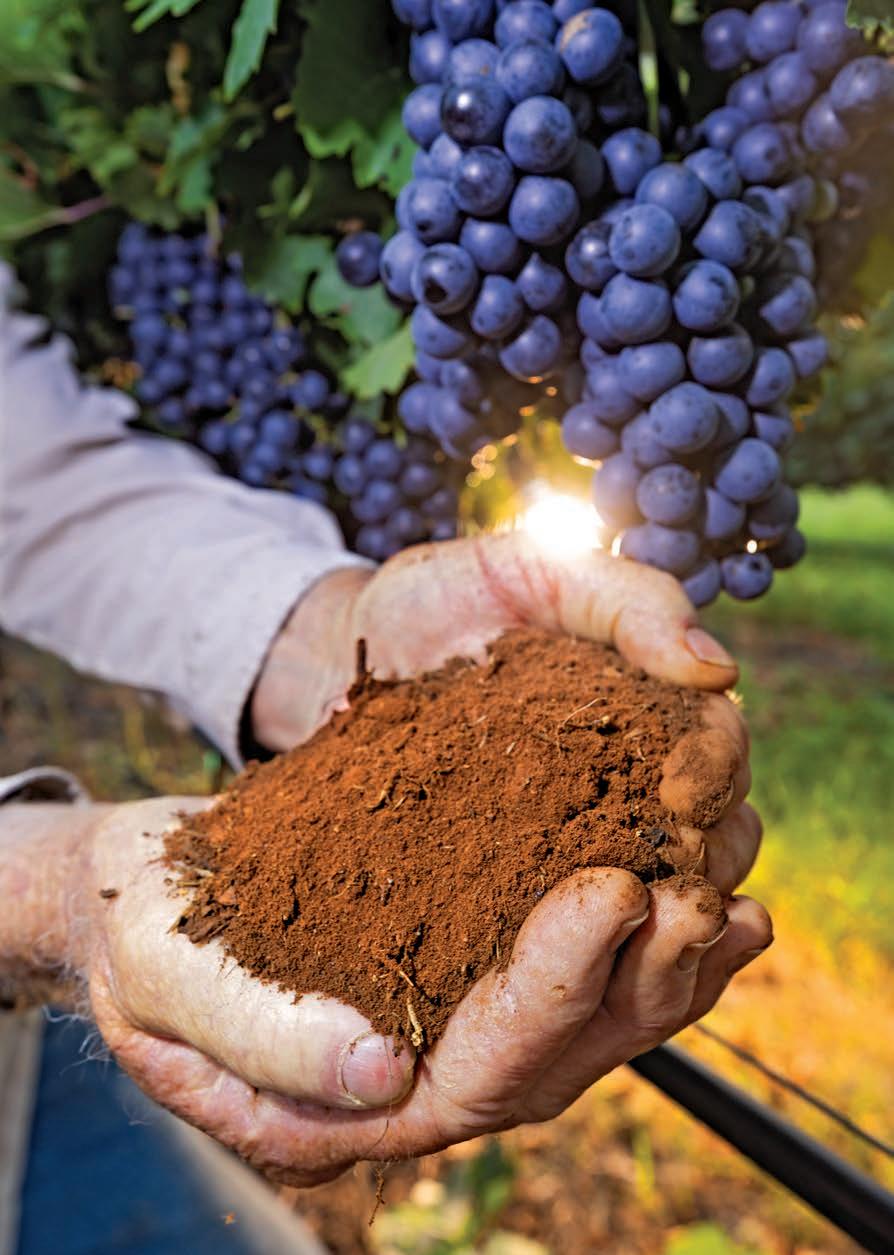

the Texas Hill Country AVA with about 2,500 acres. The oldest, the Mesilla Valley AVA, established in 1985, straddles Texas and New Mexico in the El Paso area.
As the Texas wine scene continues to expand, more oenophiles are learning about what they taste in the state’s specific terroirs, nailing down hyperlocal characteristics that help them understand exactly what types of wines they like from each region.
“The entire country of France has more than 360 different appellations,” says Valerie Elkins, managing director of membership operations for William Chris Wine Co., based in Hye, between Fredericksburg and Johnson City. “Yet Texas is larger than France, and we only have eight defined AVAs. These AVAs help the consumer to identify regions and regional expectations, so establishing more AVAs helps get more national and international understanding.
“If you were to go to a restaurant today and order a chardonnay, you’d look for a California Russian River Valley chardonnay because that’s one of the regions where those grapes grow the best. We don’t really have that in Texas yet.”
Grape and wine producers await the approval of three viticultural areas by the U.S. Treasury’s Alcohol and Tobacco Tax and Trade Bureau. The process for establishing an AVA is tedious and slow. If approved, these new appellations would be Texas’ first since 2005.
Located entirely within the Texas Hill Country AVA, the Llano Uplift AVA would cover 1.3 million acres. The greater Hill Country region sits over an ancient limestone seabed, meaning the soils are more alkaline compared with the slightly acidic soils of the uplift, which is marked by a geological formation made primarily of granite rather than limestone.
According to Justin Scheiner, associate professor and viticulture specialist at Texas A&M University and the petitioner behind this AVA proposal, the Llano Uplift has its own aquifer system, which impacts nutrient availability and water quality and allows for different rootstocks to be planted. The uplift gets less rain than surrounding areas, which contributes to the distinct character of wines made from the vineyards here.
“Aromatically, the wines in the Llano Uplift AVA exhibit more floral, delicate and perfumed characteristics,” says Claire Richardson, winemaker at Burnet-based Uplift Vineyard, which is within the proposed Llano Uplift AVA and a member of Pedernales Electric Cooperative.
“The wines are typically medium in body and have a distinct tannin structure that could be described as dusty or powdery,” she says, noting that depending on the vintage and variety, herbal characteristics can be present in the wines, including mint, eucalyptus and subtle green pepper.
This proposed viticultural area is located entirely within the western part of the proposed Llano Uplift AVA and on the edge of the Edwards Plateau in Mason County. Soils here are rich in iron, with granite and sandstone. Water from the Hickory Aquifer is important for irrigation.
Bending Branch Winery, based in Comfort and a member of Bandera Electric Cooperative, sources Hickory Sands grapes from Drew Tallent of Tallent Vineyards, one of the catalysts behind the application for this AVA proposal.
“Vines are able to root deeply into the soils of the Hickory Sands,” says Jennifer Cernosek, general manager of Bending Branch. “The Hickory Sands aquifer gives great water content to the soil, and the well-drained soil contributes to the fruit-forward nature of the wines from these grapes.”
Cernosek says that the wines Bending Branch makes from Tallent’s grapes tend to be softer in tannins, have a deeper mineral profile and are earthier.
“There’s a vanilla note in the wines that comes through across various grape varieties,” she says.
In the Chihuahuan Desert of far West Texas, the proposed Dell Valley AVA is in Hudspeth County, west of the Guadalupe Mountains and east of El Paso.
The higher elevation here, 3,640–4,200 feet, provides diurnal shifts, which means it’s hot during the day and cold in the mornings, so that grapes can produce sugars in the heat and acids as they cool.
Ron Yates of Spicewood Vineyards, a member of Pedernales EC, sources grapes from Dell Valley. He says the distinctive altitude, soil and farming techniques come through in the grapes.
“For me, it’s probably the best-value fruit we have in the

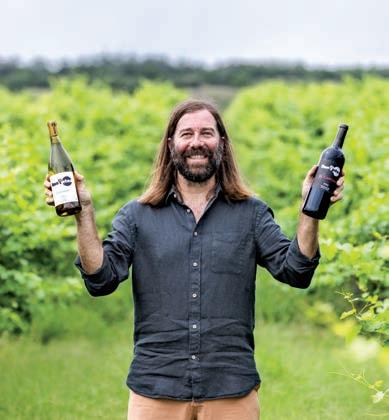
state,” he says. “Not a lot of folks are getting it, and it makes great wine. That mountain air up there is almost no humidity, so disease pressure for the grapes is less. Plus, deer aren’t roaming and eating your grapes.
“It’s probably one of the only places in the state that I have found where we can make lower-alcohol wine, and it’s still really jumping out with flavors and fruit.”
Establishing a new AVA involves filing a petition that takes time to be “perfected” to meet TTB regulation requirements, a period for public comment and then rulemaking finalization. It can take years.
But the Llano Uplift AVA, filed with the government in 2022, is close to becoming official; it’s third in line to enter a public comment period, followed by Hickory Sands, filed in 2023, which is 10th in line.
Grapes to sample from each of the proposed AVAs
LLANO UPLIFT
Montepulciano and sangiovese, both used in Italian red wines
HICKORY SANDS
Red grapes merlot, mourvèdre, touriga nacional, tannat and tempranillo, and white grape viognier
DELL VALLEY
Cabernet franc, cabernet sauvignon, chenin blanc, petit verdot, tempranillo, muscat, riesling, chardonnay and sémillon
However, while the AVAs aren’t yet official, you can still enjoy wines from each of these areas at wineries and vineyards across Texas and beyond.
“Texas is becoming known as a worldclass wine region,” says Elkins of William Chris Wine. “Breaking down our grow regions to show the unique characteristics of the soil and growing conditions will help raise awareness for the variety of terroir Texas has and continue to make Texas-grown wine more prominent in the national and international wine world.” D
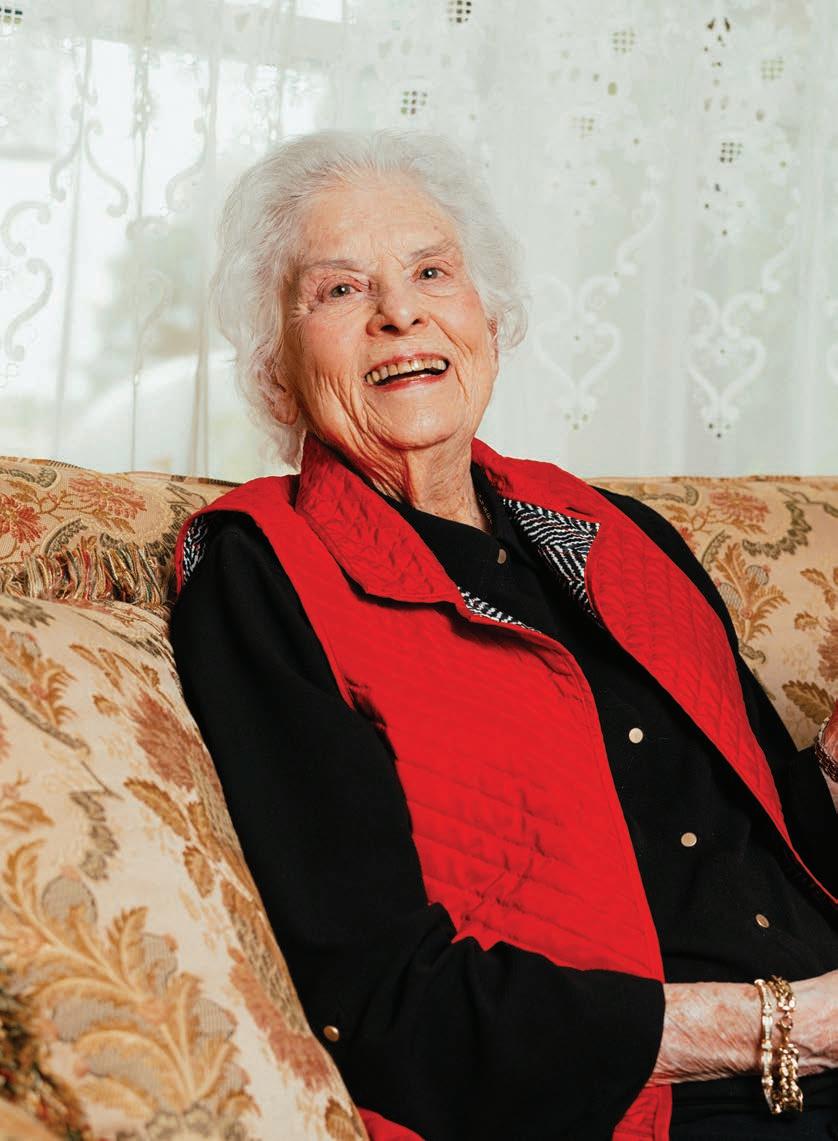
Managing an electric cooperative was a job too big for one man

BY D’ANN NICHOLS DRENNAN PHOTO BY JAY PATRICK
When Jerry Jordan said “I do” to Juan D. Nichols in 1951, she didn’t realize all she was saying yes to.
Jerry, born in 1933, was 3 or 4 when electricity came to her family’s farm near Newsome in East Texas.
“My grandparents’ and my parents’ houses were on the highway, so we were fortunate,” she says. “We were one of the first to get power.” While she doesn’t remember her own home before electric lights, she recalls visiting family and friends who didn’t have such luxuries. “It made me feel very lucky.”
She never dreamed she’d devote herself to the electric industry. She says that her first husband was a sailor in Korea, her second a college student, her third a fertilizer salesman and her fourth the general manager of Wood County Electric Cooperative. With a twinkle in her clear, green eyes, the 92-year-old whispers conspiratorially, “They were all the same man.”
In 1961, Jerry was happily settled with Juan and their three small children in Woodway, just outside of Waco.
“But Juan D. didn’t want to live anywhere other than Wood County,” where he grew up, she says. A family friend who served on the board of directors at Wood County EC told Juan about a new position opening up at the East Texas co-op: power use adviser.
Juan met Virgil Shaw, the co-op’s founding general manager, at his farm just east of Quitman on a Saturday in late fall. Jerry remembers that Juan rushed back to where she and the children were visiting with her in-laws and said, “Jerry, come on, he wants to meet you too.”
Jerry purses her lips. “Juan D. told me I didn’t have time to change, so I hopped in the car and off we went.” She must have made a good impression because Shaw hired Juan that day.
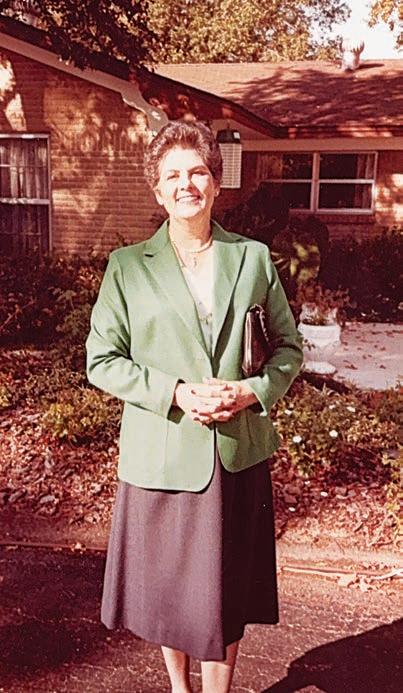

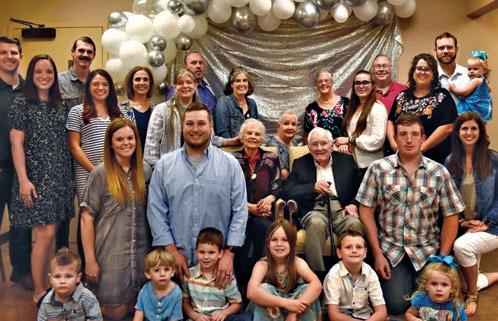

“It wasn’t unusual,” Jerry explains, “for an employer to expect the wife to help the man—without compensation, of course.”
She knits her still-dark brows. “Back then, I signed everything as Mrs. J.D. Nichols, never my name. When my daddy died, the clerk sent me out of the room so Juan D. could sign the papers to inherit my property. I couldn’t get a credit card, couldn’t take out a bank loan without my husband’s signature.” Jerry smirks. “Even though I managed our money better than he did!”
When Juan and Jerry moved to Quitman, about 35 miles north of Tyler, there were no houses available to purchase. They rented a little green house in town. Jerry remembers it snowed that winter, and flakes drifted in around the closed window and piled up on the dining table next to it.
They soon bought a lot on Meadowbrook Lane and built a modest ranch-style home. It was the first all-electric residence in Quitman. Juan installed extra meters to measure how much electricity it took to run the range, water heater, and central heating and air. Jerry didn’t get along with the electric stove. “Not to start with!” she exclaims. “I hated that
electric stove. Boy, when it boiled over, it made a mess!”
Not long after they moved in, there was a gas outage in town, and a gas company employee showed up at the door. Jerry told him, “I don’t have any gas.”
“Everybody has gas,” he answered. “For your stove, your heating and your hot water.”
Jerry’s voice is still smug as she repeats what she told him: “Not in my house.”
A college graduate with an English degree, Jerry didn’t want to leave behind her young children to teach school. At that time, public school began in first grade. So Jerry started the first kindergarten in Quitman in the garage of their new home. She operated Kiddie Kollege until 1970, when she and Juan were expecting their fourth and last child.
On January 1, 1968, Juan was promoted, becoming the second general manager of Wood County EC. At age 37, he was one of the youngest managers in the state.
Not long after Juan began working for the co-op, Jerry noticed that several wives of members of the board of directors would drive their husbands to the monthly meetings and wait in their cars outside. With a laugh, she explains that the men were “too old to drive—they were in their 60s and 70s!”
Jerry invited these ladies to her home. For more than three decades, she served coffee and dessert and visited
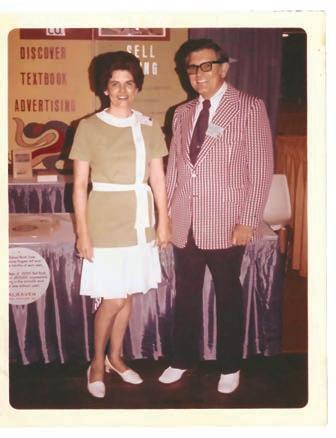
OPPOSITE, CLOCKWISE FROM LEFT Jerry at the Nichols’ house on Meadowbrook Lane, the first all-electric residence in Quitman. A moment from Juan D.’s roast when he retired from Wood County Electric Cooperative. The family gathered to celebrate Jerry and Juan D.’s 70th wedding anniversary.
ABOVE The Nicholses in 1973. RIGHT Jerry when she served as president of the Sabine River Authority of Texas.
October is when the more than 30,000 co-ops in the U.S. celebrate their unique business model and the cohesive communities they create and support. Included in that number are 894 electric distribution and generation and transmission cooperatives with some 42 million members. That includes 77 co-ops that power the lives of some 3 million Texans with 363,000 miles of line across the state.
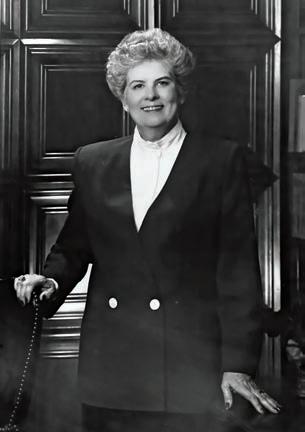
with the wives one Monday a month while their husbands conducted business.
“It was a consuming job for both of us,” Jerry says. In those days, when an ice storm hit, Juan went to the office until the lines were cleared. Jerry cooked huge pots of chili or stew so the lineworkers could have a hot meal when they came in.
The co-op didn’t have 24-hour dispatching until 1981. Before that, people called the Nichols’ home phone whenever their power went out. Jerry recalls one night when the harsh ring woke Juan from a deep sleep. She heard him ask three times for the caller’s last name, then finally inquire, “How do you spell that?” Jerry laughs as she remembers hearing Juan repeat back, “J-O-N-E-S.”
In the ’80s, the co-op hired lawyers from Washington, D.C., and consultants from Georgia to help with wholesale power purchases and other national issues affecting rural cooperatives. “There weren’t many options for hotels near us in those days, so I always hosted whoever was in town at our home,” Jerry remembers. “At first, I was intimidated, but I discovered these men were grateful to have a home-
cooked meal and spend time with our family.”
Even though Jerry was a supportive wife, she wasn’t content merely to serve stews and sip coffee. She took a leadership role in her community and in statewide organizations.
Jerry was active in the Quitman PTA, donating her time to the schools her children attended, and she was the editor of the Texas Rural Electric Women’s Association newsletter.
Her proudest accomplishment came in October 1991, when Gov. Ann Richards appointed Jerry as the first female director of the Sabine River Authority of Texas. Initially, a staffer was assigned to be Jerry’s “chaperone” at every board function. After the second encounter, Jerry decided, “Enough is enough.”
At the next meeting, she walked up to the huddle of male directors. “They didn’t have anything to say that would shock me,” she exclaims, tapping a red-polished nail on the arm of her chair. “I shared these experiences with Juan D. Hopefully, I helped make it easier for women to become leaders in our co-op.”
Jerry encouraged Juan to recruit women for executive positions and the board. In 1991, Cathy Roberts was chosen to fill an unexpired term, becoming the first female board member of Wood County EC. When Juan retired in 1997, he recommended Debbie Robinson to succeed him as general manager. She was one of the first women in the nation to lead an electric cooperative.
Juan died the day after Christmas in 2021, but Jerry continues to live in the house they shared. She has four children, eight grandchildren and 10 great-grandchildren, who she says are the center of her world.
Jerry rocks gently in her recliner, a smile lighting her face. “I don’t know how I got so blessed,” she says. “Juan D.’s and my work with the co-op provided us with opportunities I never could have imagined.” D






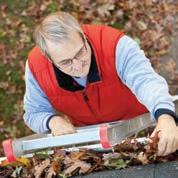







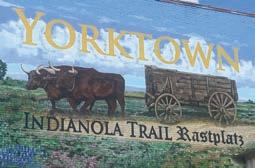

Friday 11:00–2:00 • Saturday 1:00–4:00 And by Appointment
r Yorktown Historical Museum 144 W. Main, Yorktown, Texas
361-935-5243 (please leave a message) bcbruns47@gmail.com Available for reunions or small parties




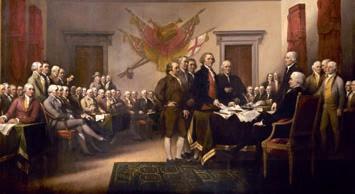
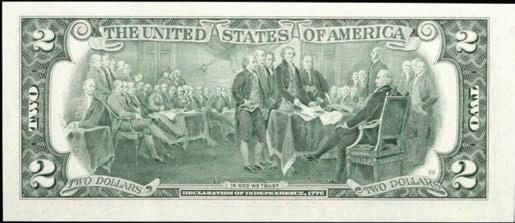

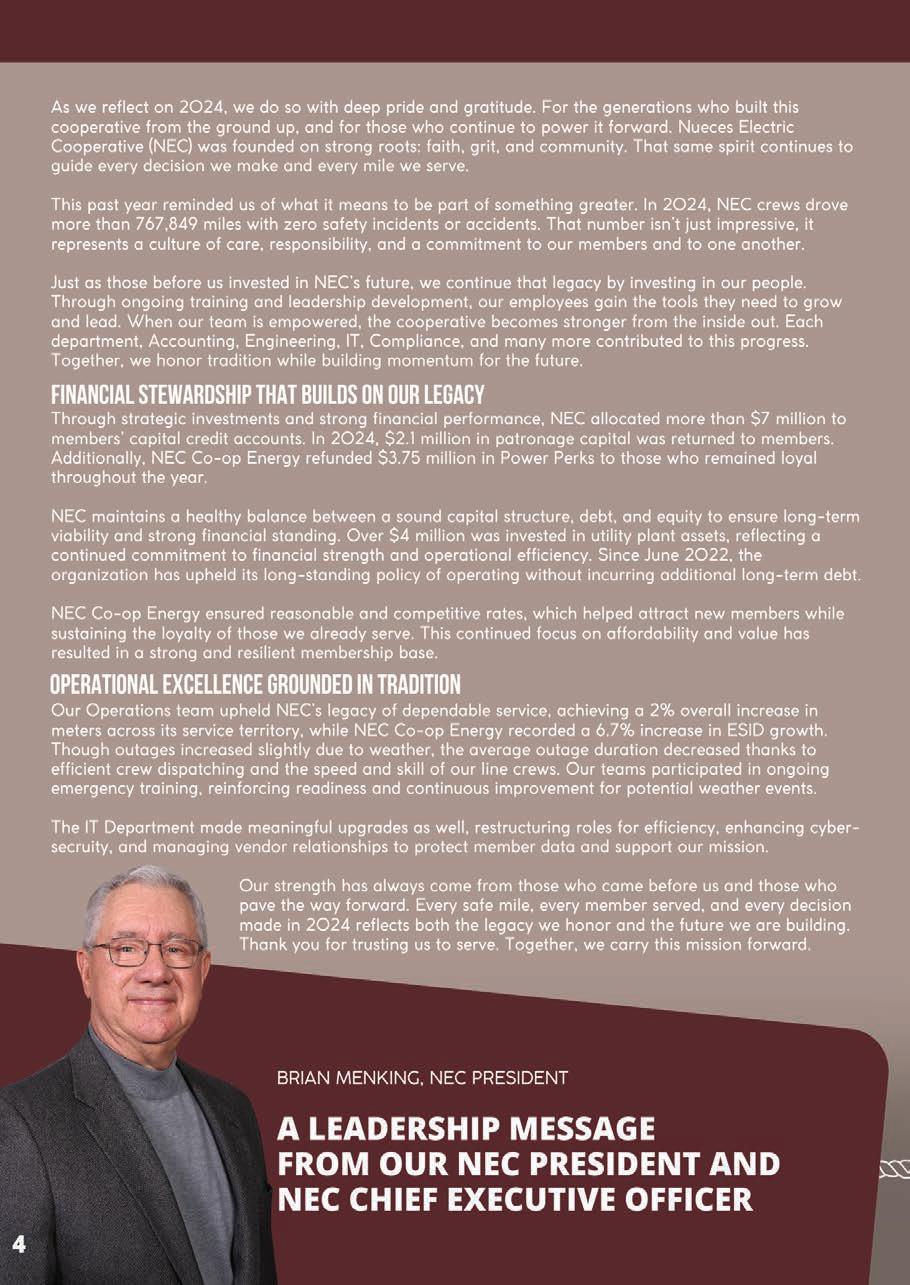

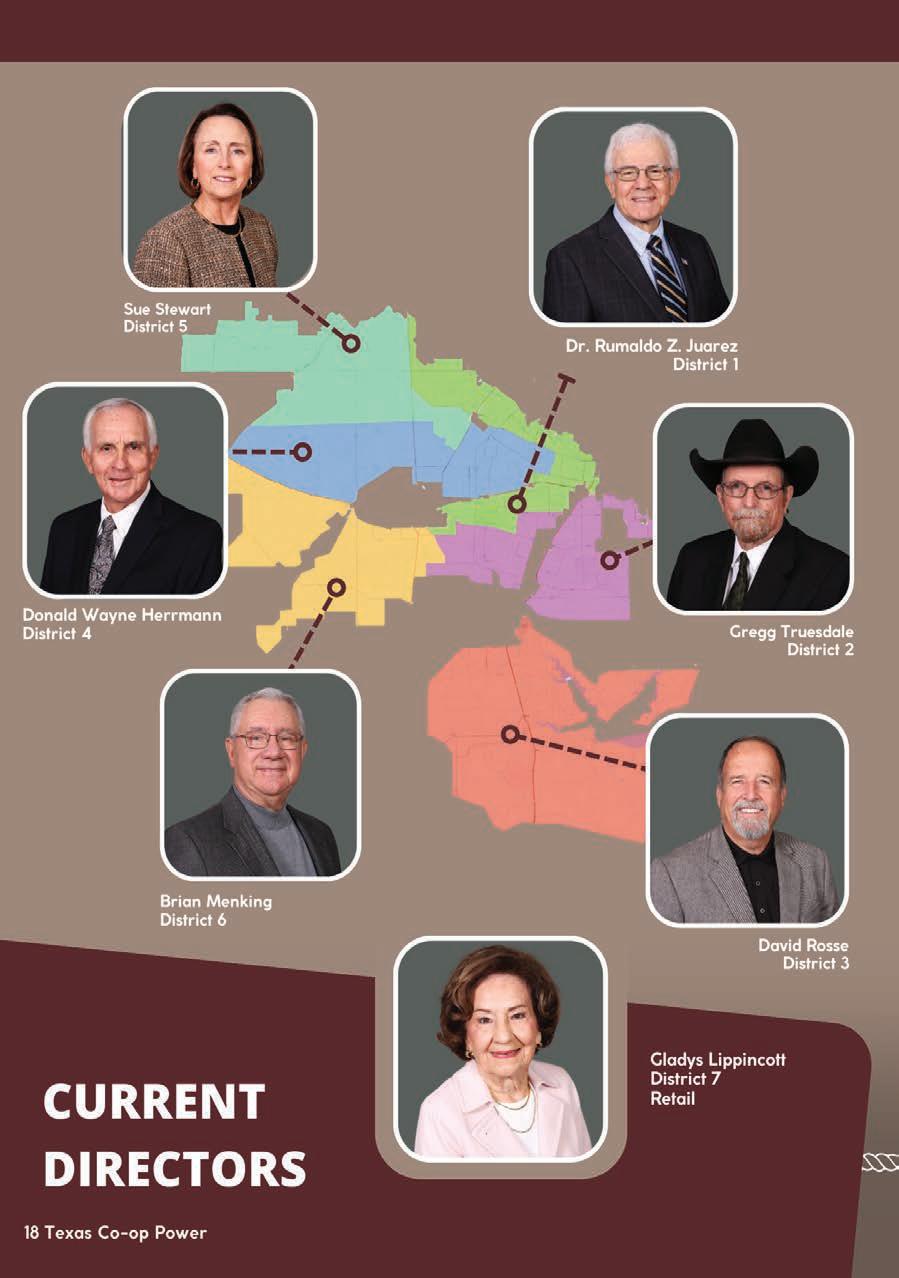
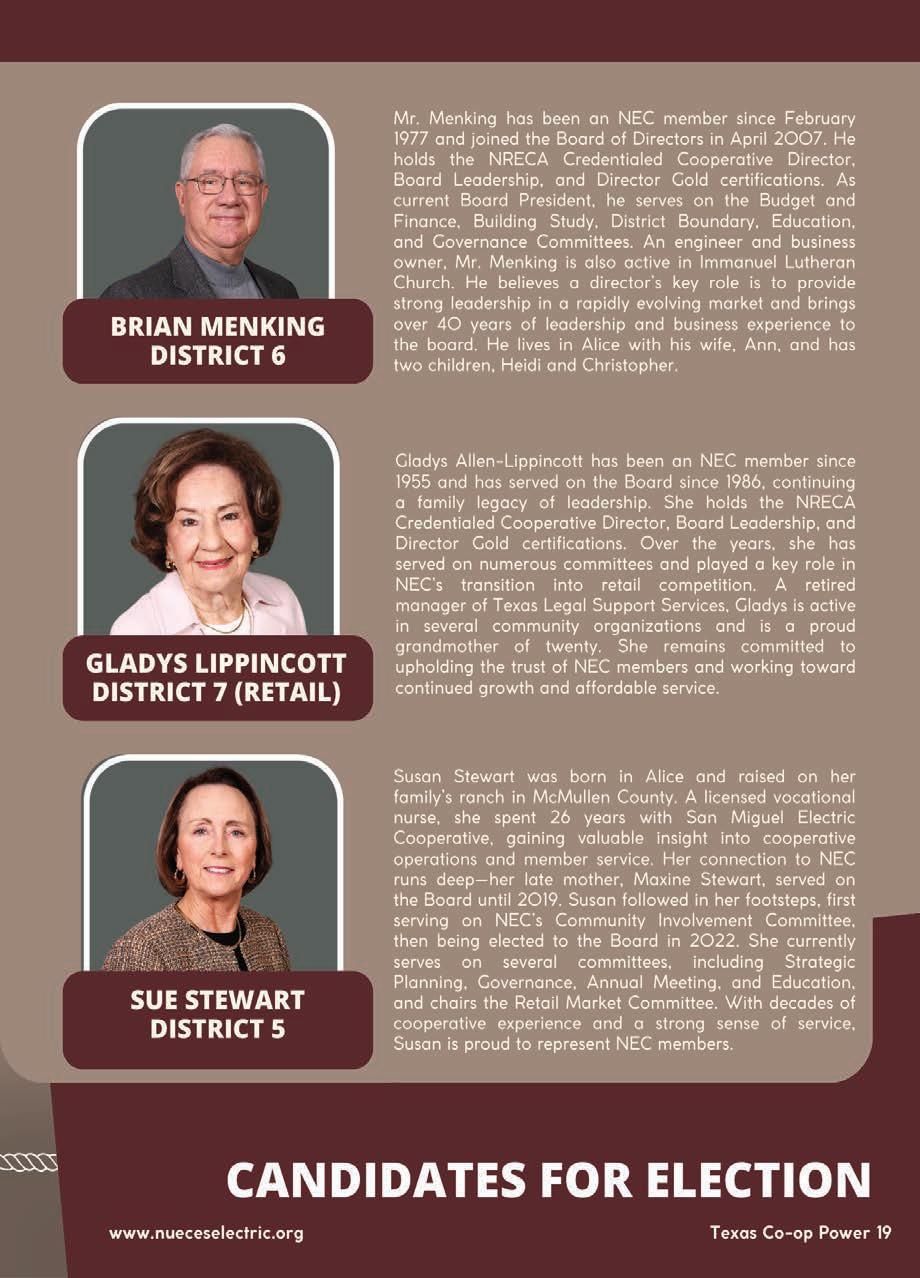

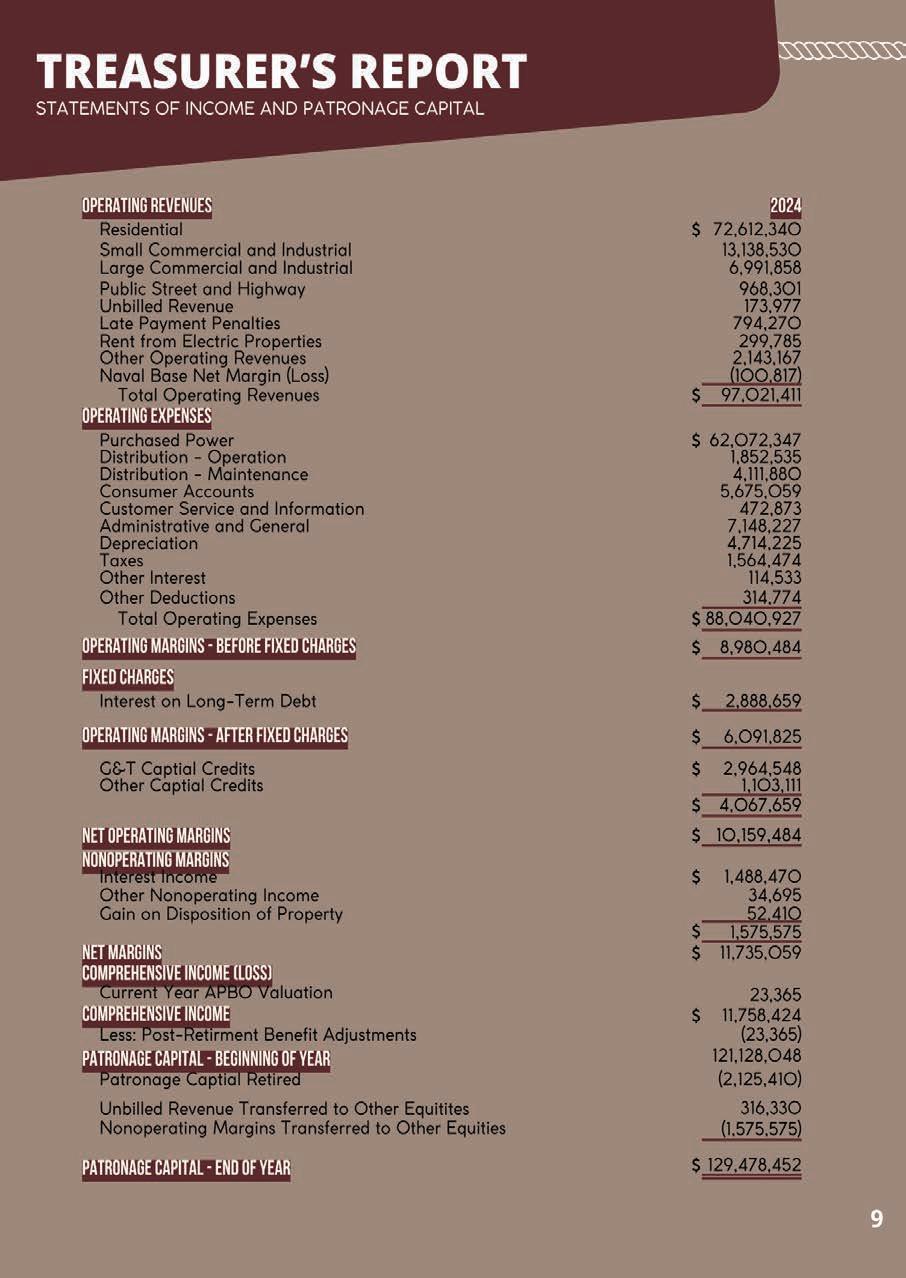






“I never expected it to be so beautiful that it takes your breath away.”
— Kaya C., on Stauer Opals
I
n a quaint village, nestled between rolling hills, lived a young woman with a deep appreciation for gemstones. Her grandmother gifted her a delicate cross pendant adorned with opals. The opals shimmered with a mesmerizing play of colors, reflecting hues of blues, greens, and fiery oranges. Her grandmother shared the legend of the opals, believed to bring hope, purity, and luck to those who wore them.
Using this story as inspiration, Stauer brings you the Opal Spirit Cross Pendant. With over 2 total carats of Kyocera lab-created opals set in .925 sterling silver encased in yellow gold, this pendant is a radiant celebration of beauty and craftsmanship. Each opal captivates with a kaleidoscopic dance of fiery oranges blending into oceanic blues, streaked with flashes of vibrant green that seem to come alive with every movement. The shimmering opals are skillfully arranged to create an enchanting, otherworldly glow, embodying the spirit of hope and harmony.
This breathtaking combination of color and craftsmanship is available as a limited availability of
only 930 pieces, making it a rare and treasured addition to your jewelry collection. Plus, when you order today, you’ll receive the gold-finished sterling silver chain—a $69 value—absolutely free!
Don’t miss your chance to own this exclusive tribute to timeless elegance and meaningful symbolism.
Necklace Specifications:
• 2 1/2 ctw. Kyocera lab opals and DiamondAura® accents
• Yellow gold-finished .925 sterling silver setting
• 18" gold-clad .925 sterling silver chain
Opal Spirit Cross Pendant plus FREE Chain
$499 $59* + S & P Save $440
*Special price only for customers using the offer code. 1-800-333-2045
Your Insider Offer Code: OCR249-01
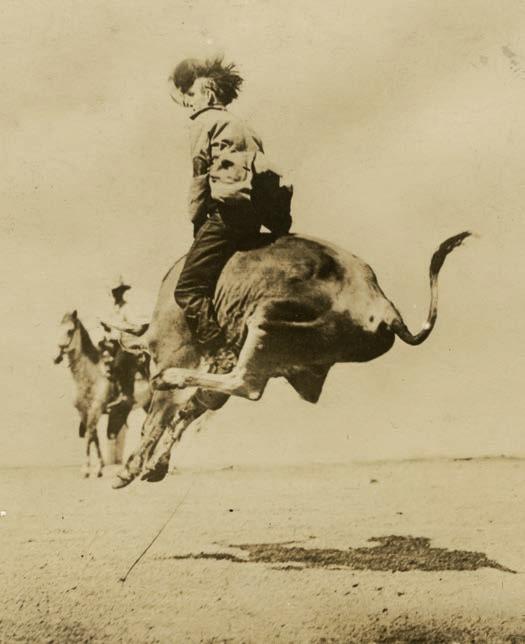
BY CHUCK LYONS
IT WAS CLAIMED, journalist Jerry Armstrong once wrote, that rodeo clown Red Sublett would ride anything that “a saddle, a riggin’ or a rope could be used on”—horses, mules and bulls, of course, but also cows, buffaloes, zebras and at least one ostrich. Sometimes he rode them straight, sometimes backwards but always with zany antics that left the crowd laughing.
Sublett was “the greatest and the highest-paid arena comic of his day,” Armstrong wrote.
He was born John Dixon Sublett in Arlington in November 1893, and he died, by then known to everyone as Red, in Dallas a scant 56 years later.
His family had settled in the countryside when the prairies were still unfenced.
The town of Sublett, now part of Arlington and some 18 miles southeast of Sublett’s modest, pink granite headstone in Mount Olivet Cemetery, bears the family name.
Sublett’s father moved his family from Texas to Oklahoma via horse-drawn covered wagon with two milk cows tied to the tailgate.
Before World War I intervened in 1917, Sublett worked rough stock on ranches, including the 101 Ranch in Oklahoma and later the Four Sixes in Texas. Before that, at just 16, he had ridden broncs and steers for Booger Red’s traveling cowboy show and Lucille Mulhall’s show.
He enlisted in the war effort and saw action in France with the medical corps before returning to his rodeo antics.
At a rodeo in Magdalena, New Mexico,
the story goes, producer Tex Austin and announcer Foghorn Clancy took Sublett aside and told him he was getting plenty of big laughs just being himself and that he should become a rodeo clown.
It paid better, they said.
As rodeo evolved from its beginning in ranch corrals in the early 1900s, promoters realized their audiences drifted away whenever there was a break in the action due to injuries and other delays. So the rodeo clown was created to keep spectators entertained during those breaks.
When bull riding became a regular part of rodeos in the 1920s and ’30s, the clown’s role—and importance—grew as he stepped in to distract the bull and allow its rider to get out of danger. Today’s rodeo protection teams, made up of highly trained athletes, are still a vital part of competitions—work that started with the clowns.
“The early clowns were cowboys who could rope and ride with the best of them … and they were, above all, showmen,” wrote Jeanne Joy Hartnagle-Taylor in her 1993 book Greasepaint Matadors. Sublett fit that description perfectly.
He picked up a trained mule named Spark Plug that he claimed could be taught to do just about anything, and together the duo performed in rodeos throughout the U.S. and abroad, including shows in London, Paris and Dublin. They also performed in films with actors Wallace Beery, Bob Steele and Pearl White. Spark Plug died in Fort Worth in 1931, and Red’s career began sliding to an end. He died from a heart condition in the veterans hospital in Dallas on April 14, 1950.
His headstone reads, “World Famous Dean of Rodeo Clowns.” D
Can’t beat these treats—and no baking is involved
BY VIANNEY RODRIGUEZ, FOOD EDITOR
My mami has been whipping up these delights every holiday season for as long as I can remember. She had us kids shaping coconut balls by the dozen. She gifted them, served them at family gatherings and even shipped them to relatives.

1/4 cup (1/2 stick) butter, melted
1 1/2 cups sweetened shredded coconut
1 cup powdered sugar
1/2 cup semisweet chocolate chips 1/4 cup chopped pecans
1. Line a baking sheet with parchment paper.
2. In a large bowl, stir together butter, coconut and sugar. Shape into 1-inch balls. Place on prepared baking sheet.
3. Gently press your thumb or the back of a teaspoon measuring spoon to make an indentation in the middle of each ball.
4. In a microwave-safe bowl, heat chocolate chips in 30-second increments, stirring each time, until fully melted.
5. Fill each indentation with melted chocolate. Sprinkle with pecans. Refrigerate until firm.

TAMMY CARR
SAM HOUSTON EC
It doesn’t get much simpler than this. These easy, quick, no-bake peanut butter treats are a perfect mix of sweet and crunchy.
1 cup corn syrup
1 cup sugar
1 1/4 cups peanut butter
6 cups cornflakes
1. Line 2 baking sheets with wax paper and set aside.
2. Combine corn syrup and sugar in a large saucepan and bring to a boil, stirring continuously until sugar is melted.
3. Remove from heat, add peanut butter and mix well.
4. Add cornflakes and mix to combine. Drop by spoonfuls onto wax paper to create a rounded candy. Cool until set and firm.
MAKES 24 PIECES

GERI HUPP DEEP EAST TEXAS EC
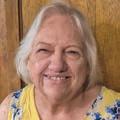
Hupp’s pumpkin fudge with white chocolate and cinnamon is sure to be a hit with candy lovers. It’s creamy, smooth and perfect for the fall. I advise making a triple batch because this rich fudge will go fast!
2/3 cup evaporated milk
2 1/2 cups sugar
3/4 cup canned pumpkin purée
1 teaspoon ground cinnamon 1/2 teaspoon salt
1 jar marshmallow crème (7 ounces)
2 tablespoons (1/4 stick) butter
1 cup white chocolate chips
1 teaspoon vanilla extract
1. Line a 9-by-9-inch baking pan with aluminum foil and set aside.
2. In a large saucepan, heat evaporated milk and sugar over medium-high heat, stirring occasionally. Bring to a boil.
3. Stir in pumpkin purée, cinnamon and salt. Return to a boil.
4. Stir in marshmallow crème and butter. Return to a boil. Cook, stirring occasionally, 18 minutes.
5. Remove from heat. Add chocolate chips and vanilla. Stir until creamy and all chocolate chips are melted.
6. Pour into prepared pan. Cool completely until firm.
7. Remove from pan and cut into squares. Store in a cool, dry place.
MAKES 16 PIECES
BARBECUE SIDES DUE OCTOBER 10
CONTINUED ON PAGE 28 >
Superior sides can make a good barbecue great. For our March issue, we’re serving up your best fixin’s, with the top trimming earning $500.
UPCOMING: FIVE-INGREDIENT DINNERS DUE NOVEMBER 10
LINDA FOREMAN
TRINITY VALLEY EC
This is the prettiest fudge I have ever made. Flecks of dried fruit swirled into a creamy white chocolate marshmallow base really do give the appearance of festive confetti.
3/4 cup (1 1/2 sticks) butter, plus more to grease pan
3 cups sugar
2/3 cup sour cream
1 package white chocolate chips (12 ounces)
1 jar marshmallow crème (7 ounces)
1/4 cup chopped dried cranberries
1/2 cup chopped dried apricots
1/4 cup chopped golden raisins
1. Butter a 9-by-13-inch baking pan.
2. In a large saucepan, combine butter, sugar and sour cream over medium-high heat. Bring to a boil, then reduce heat to medium and cook 5 minutes, stirring





constantly to prevent scorching.
3. Remove from heat and stir in white chocolate chips and marshmallow crème until smooth.
4. Stir in cranberries, apricots and raisins. Carefully pour into prepared pan.
5. Cool completely until firm. Cut into individual servings.
MAKES 12 PIECES










This upcoming holiday season, I’m gifting edible treats wrapped to impress! Here are a few fun ideas that take gifting to the next level.
A candy-filled Mason jar makes for a great reusable gift. Layer with parchment paper, top with a lid and tie a vibrant ribbon.
Make use of spare tins. Embellish with greenery, ribbon, bows or cupcake liners filled with candy.
Wrap candy in cellophane then tuck it in a kitchen towel for two gifts in one. I love this look!
—Vianney Rodriguez
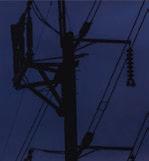























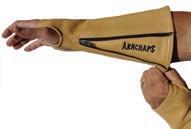





Helps Prevent Bruising and Protects Those With Thin Skin! Soft leather protective sleeves help protect you from 100’s of injury-prone chores you do at work, home, farm, or ranch. Even has adjustable airflow!
(651) 492-4830 armchaps.com
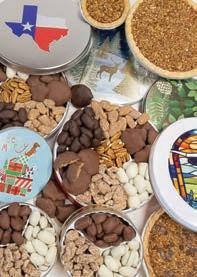
1-800-580-1900 crockettfarms.com
Always a gift in good taste. Orchard-fresh grapefruit and other Texas products are all hand-selected, carefully packed and shipped to be delivered just in time for the holidays. The Best of Typically Texas
Favorite recipes from Texas Co-op Power Look back at these best-loved recipes from two of our most popular cookbooks. Contact your local co-op today, or place your order online.
texascooppower.com/shop
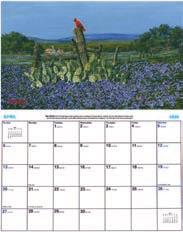
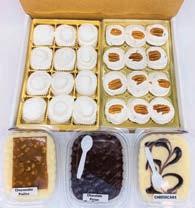

Looking for a gift that’s always remembered?
Berdoll’s has been handcrafting pecan pies, honey glazed pecans, and chocolate favorites for 45 years. Stop by our store or let us ship Texas pecan goodness right to your door.
800-518-3870
berdoll.com
Large 20-by-15-inch calendar with 12 watercolor scenes. Enjoy nature’s beauty yearround with this 2026 calendar by Texas State Artist George Boutwell. $20 plus tax and $4.50 shipping. See website for quantity pricing.
1-800-243-4316 gboutwell.com
The Best Fudge in Texas. The Best Divinity in the World. Bring back those childhood memories of Christmas with the sweet gift of fudge and divinity from Holiday Farms.
holidayfarmscandy.com divinitybydave.etsy.com
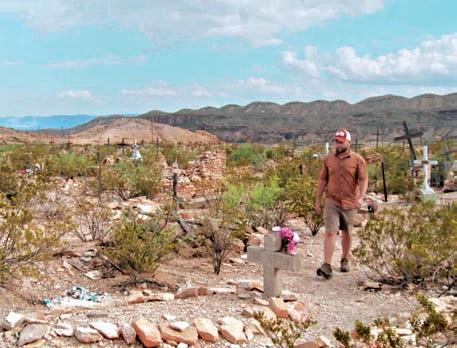
Pay your respects at this ghost town’s eerie, ancient cemetery
BY CHET GARNER
IF YOU HEAD TOWARD the Big Bend and then go into the region between the national park and state park, you’ll feel like you’re driving onto an alien planet. Sweeping desert views in every direction punctuated by rocky cliffs of tan and red are both beautiful and bizarre.
Eventually you’ll reach the notable ghost town of Terlingua (population 130 or so), a few miles from the Mexican border. It’s hard to imagine how folks live in such a faraway locale, but a trip to the cemetery confirms that Texans have been living out here for a very long time.
Like every tourist, I started my visit with a bowl of red at the Starlight Theatre, a destination restaurant built inside the stone shell of an old movie theater. After filling my belly, I wandered down the street and stepped onto the hallowed ground of the town’s historic cemetery.
This is not your typical green acres of eternal slumber but a dusty patch of desert with uneven stacks of rocks marking graves, along with handmade crosses, rusted metal ornaments, plastic flowers and even a few beer bottles.
The silence was broken only by the wind and the abrupt buzz of a grasshopper that I kept mistaking for a rattlesnake. Most of the graves date back to the early 1900s, when families moved here to seek their fortune in the long-defunct mercury mines. Many of the graves note the same death year: 1918, when the Spanish flu ripped through the community.
As the last bit of sunlight disappeared behind the mountains, the graveyard glowed with a dusty kind of reverence. It’s clear the community still feels a great deal of pride and connection to its past. It serves as a reminder that not all who wander to this part of Texas are lost, and some choose to never leave. D
ABOVE Chet explores the graves at the century-old Terlingua cemetery.
Watch the video on our website and see all Chet’s Texplorations on The Daytripper on PBS.
Call ahead or check an event’s website for scheduling details, and check our website for many more upcoming events.
9
10
11
Groves [9–12] Pecan Festival, (409) 962-3631, grovescofc.com
San Marcos [10–11] Aviation Discovery Fest, (512) 396-1943, centraltexaswing.org
Corsicana Airsho, (903) 467-7170, coyotesquadron.org
Hillsboro Hill County Master Gardeners Tree Sale, (254) 582-4022, hill.agrilife.org
Luling Night in Old Luling, (830) 875-0123, lulingcc.org
Sanger Car and Motorcycle Show, (940) 395-1306, facebook.com/sangerpost268
Chappell Hill [11–12] Scarecrow Festival, (979) 836-6033, chappellhillhistoricalsociety.com
Edom [11–12] Art Festival, (903) 258-5192, edomarts.com
16
17
Lufkin Beatles to Bourbon Street: The Fabulous Equinox Orchestra, (936) 633-5454, angelinaarts.org
Mansfield Haunt the Block, (817) 728-3390, visitmansfieldtexas.com
Brenham [16–19] Texas Arts & Music Festival, (979) 337-7580, texasartsandmusicfestival.com
Dripping Springs [17–18] Lone Star Gourd Festival, (512) 964-5540, texasgourdsociety.org
18
21
Calvert Hooves & Heels Historic 5K, (512) 639-7886, historiccalvert.org
China Spring Oktoberfest, (254) 836-1825, stphilipcs.com
Llano Invitational Bullriding, (303) 912-1646, llanobullriding.com
Waco Oakwood Cemetery’s Walking Tales, (254) 717-1763, facebook.com/heartoftexas storytellingguild
Hallettsville St. Peter Lutheran Church Women in Mission’s Country Store, (361) 798-2808, stpeterhallettsville.org
24
Palestine [24–25] Hot Pepper Pop-Off and Festival, (903) 729-6066, palestinechamber.org 25
Flower Mound Smoke & Whiskey Fest, (469) 360-7757, fmsmokefest.com
Waxahachie Crossroads of Texas Go Texan Country Festival, (469) 309-4040, waxahachiecvb.com
Granbury [25–26] Harvest Moon Festival of the Arts, (682) 936-4550, granburysquare.com
Grapevine [25–26] Trick ’R Treat Trains, (817) 410-3185, grapevinetexasusa.com


Round
[6–9]

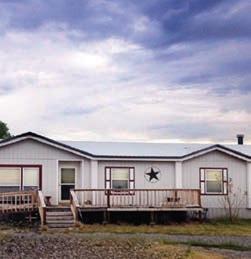










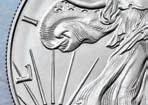














































































Travel the globe without leaving home with the world’s five most popular pure silver coins. Newly struck for 2025 in one ounce of fine silver, each comes in Brilliant Uncirculated (BU) condition. Your trip includes stops in the United States, Canada, South Africa, Australia, and Great Britain.
Each of these coins is recognized for its breathtaking beauty, and for its stability even in unstable times, since each coin is backed by its government for weight, purity and legal-tender value.
2025 American Silver Eagle: The Silver Eagle is the most popular coin in the world, with its iconic Adolph Weinman Walking Liberty obverse backed by Emily Damstra’s Eagle Landing reverse. Struck in 99.9% fine silver at the U.S. Mint.





2025 South African Krugerrand: The Krugerrand continues to be the best-known, most respected numismatic coin brand in the world. Struck in 99.9% fine silver at the South African Mint.
2025 Canada Maple Leaf: A highly sought-after bullion coin since 1988, this 2025 issue was struck in highly pure 99.99% silver at the Royal Canadian Mint.
2025 British Silver Britannia: One of The Royal Mint’s flagship coins, this 2025 issue features Lady Britannia, defender of Britain, struck in 99.9% fine silver at The Royal Mint.
2025 Australian Silver Kangaroo: For the first time ever, the kangaroo has rounded out the top 5 in the top 5 coins in the world. This gorgeous coin continues the Australian Kangaroo series’ tradition of combining high precious metal purity with stunningly detailed designs. Struck in 99.99% fine silver at the Perth Mint.













SAVE with this World Coin Set!
You’ll save both time and money on this world coin set with FREE shipping and a BONUS presentation case, plus a new and informative Silver Passport! You’ll also receive a FREE mystery gift A $25 value, it’s yours at no extra charge!
FREE Mystery Gift with every order! (A $25 value!)




Just Released and AVAILABLE NOW!
These amazing, just released 2025 Silver Passport 5-Coin Sets featuring five popular Silver Dollars from around the world are in stock now. Don’t wait. Order now and your 2025 Set will ship directly to your door.
Order your Silver Passport Set right now—while they last!
2025 World Silver 5-Coin Set






Regular Price $279 –Only $219 per set!


SAVE $60.00 (over 20%) + FREE SHIPPING AND FREE Gift!
• 1300 Corporate Center Curve, Dept. WRD444-17, Eagan, MN 55121

A little paint can go a long, long way
BY JULIE ROYCE ILLUSTRATION BY RAUL ARIAS
A SHORT DISTANCE from where State Highway 62 meets U.S. Highway 96 sits a small white house painted with bright blue polka dots. Located in the small town of Buna, about 40 minutes north of Beaumont, this landmark was built by my grandfather, Virgil Newton Davis. Some say this eccentric piece of history put Buna on the map.
I’m the daughter of Virgil’s third son, Jud. I grew up on a family homestead in Buna until I was 14. Although I never had the opportunity to meet my grandfather, as a child I heard all kinds of stories about him.
Family described him as a hardworking man of few words with an odd sense of humor who loved his coffee black and bitter. I soaked up stories about his adventures throughout the Southwest,
busting broncos before settling in Kingfisher, Oklahoma, where he became a rancher and a father of six.
But he’s a Texan through and through, and my Texas roots run deep because of Granddaddy. He was born in Newton County, in the Old Laurel community, in 1896. Although he left the state as a teenager, he returned just as the U.S. entered World War II, making his way to Buna with his family in tow.
In 1948, he built the Buna Polka-Dot House, a home that would become a part of my family’s legacy. Virgil took inspiration from Native American homes that dotted the stark plains of Oklahoma. Those homes were colorfully embellished with petroglyphs and other designs. He decided to bring some of that color to the area just outside the Golden Triangle.
I often think about this modest structure, made of lath and plaster stucco and covered in blue dots applied with an old cloth attached to a two-by-four. Was he trying to create a bright spot among the dust and gray that was still clouding most of the South in the aftermath of the war and the Great Depression, or was this stoic man really just a jokester at heart? Maybe it was both.
Personally, I like to imagine him as a jokester. I mean, he was building a duplex with plans to paint horseshoes and teardrops on either side when he suddenly passed away in 1950. If that décor didn’t make people laugh, what would?
Decades later the Buna Polka-Dot House is as meaningful to this small community as it is to my family. It’s the backdrop of many community events, was the home of the chamber of commerce for a period and was the subject of many pieces of folk art.
My only wish is that Granddaddy had lived long enough to see how cherished it has become. D













